
How To Install a Car Awning Without a Roof Rack: An Easy Step-by-Step Guide
Inside this Article
Are you an adventure-seeking outdoor enthusiast who loves camping trips and road excursions? Or perhaps you're a weekend warrior seeking shade and shelter for those tailgating parties?
Either way, a car awning is a game-changer, providing you with a cozy, shaded escape from the harsh sun or sudden rain showers. But what if your vehicle doesn't have a roof rack?
Common Questions and Concerns
Before we dive into the installation process, let's address some frequently asked questions and concerns:
Can I really install an awning without a roof rack?
Absolutely! While roof racks offer a convenient mounting solution, there are other ways to securely attach an awning to your vehicle.
Won't it damage my car?
Not if you follow the proper installation guidelines.
We have provided step by step guide on how in install car awnings using bracket, this minimizing the risk of scratches or dents.
Is it difficult to install?
Not at all! With the right tools and a bit of patience, installing a car awning without a roof rack is a straightforward process that most DIYers can handle.
Does installing a car awning without a roof rack affect fuel efficiency?
While an awning itself may still create some additional drag, installing it directly on the vehicle without a roof rack is likely to have a smaller impact on fuel efficiency compared to having a full roof rack system.
Step-by-Step Installation Guide
Here's a step-by-step guide to installing your car awning without a roof rack:
Gather Your Supplies
You'll need the awning itself, mounting brackets (designed for awning installation), a drill, drill bits, wrenches or socket set, and any other tools recommended by the manufacturer.
Choose Your Mounting Location
Identify the ideal spot on your vehicle for mounting the awning brackets.
This might be on the roof, the tailgate, or the side panels, depending on your vehicle's design and the awning's size.
Prepare the Mounting Surface
Thoroughly clean the chosen mounting surface, removing any dirt, debris, or wax. This will ensure proper adhesion and prevent future issues.
Mark the Bracket Positions
Use the provided templates or measurements to accurately mark where the brackets will be installed.
Double-check your measurements to avoid costly mistakes
Drill the Mounting Holes Carefully drill the mounting holes, following the manufacturer's instructions and using the appropriate drill bits for your vehicle's surface material (metal, fiberglass, etc.).
Secure the Mounting Brackets
Using the provided hardware, securely attach the mounting brackets to your vehicle.
Tighten all bolts or screws according to the specified torque requirements. Attach the Awning With the brackets in place, it's time to mount the awning itself.
Follow the manufacturer's instructions for connecting the awning to the brackets, ensuring a secure and stable fit.
Test and Adjust Once installed
Extend the awning and make any necessary adjustments to ensure proper tension and coverage.
It's also a good idea to practice retracting and stowing the awning for future use.
Here's a single table featuring awnings that comes with the mounting brackets. You don't need a roof rack to install these awnings on your car or truck.
Awnings with Mounting Brackets
| Product | Image | Description | Key Features |
|---|---|---|---|
| Body Armor Sky Ridge 180Xl Awning | 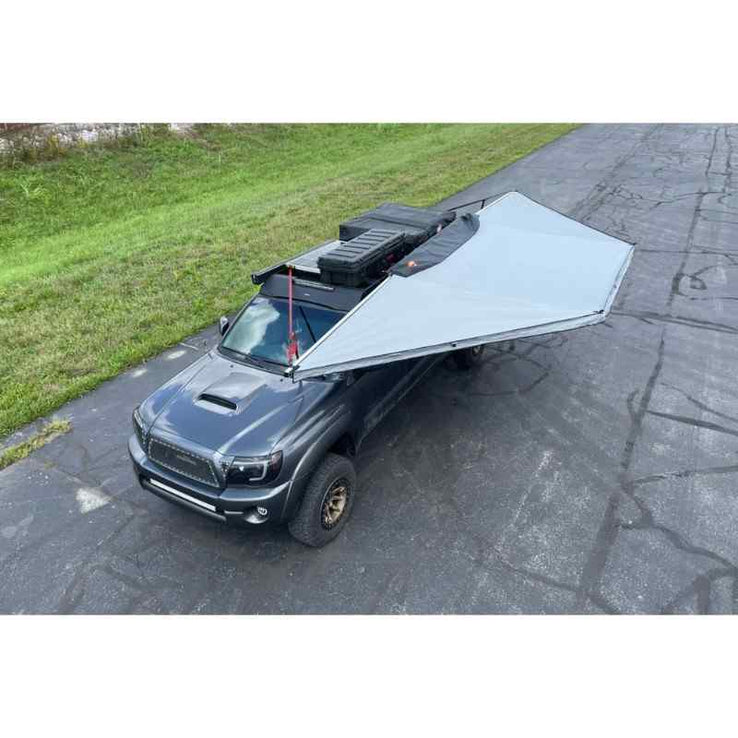 |
A 180-degree awning with included mounting brackets for easy installation on vehicles without a roof rack. | Includes mounting brackets - Lightweight and easy to install - Durable and weather-resistant materials |
| Body Armor Sky Ridge 270 Awning | 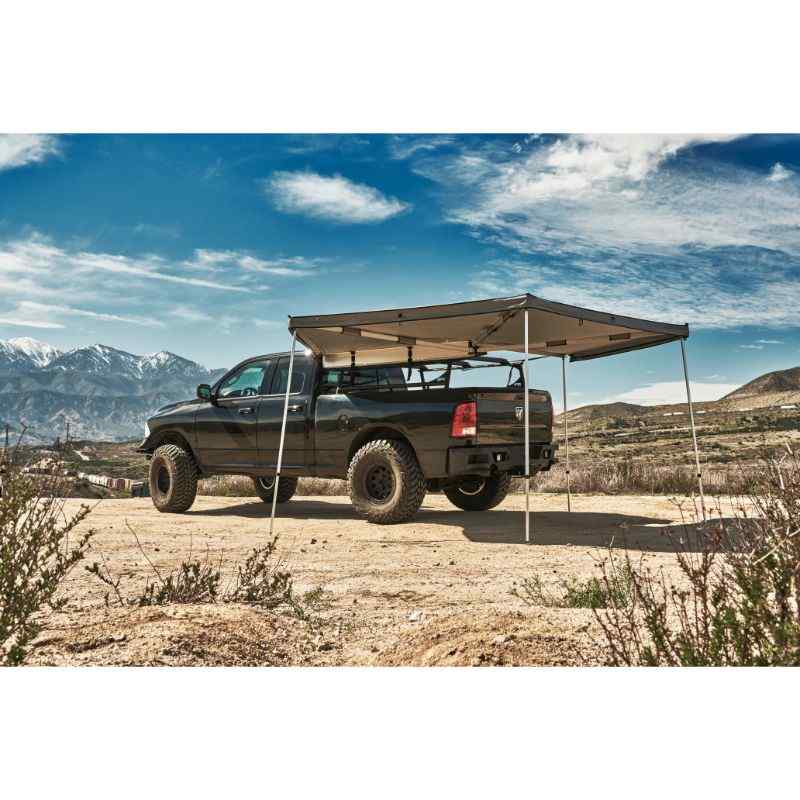 |
A 270-degree awning with included mounting brackets, offering extensive shade coverage for your vehicle. | Includes mounting brackets - Lightweight and easy to install - Durable and weather-resistant materials |
| Tuff Stuff® Overland 270 Degree Awning | 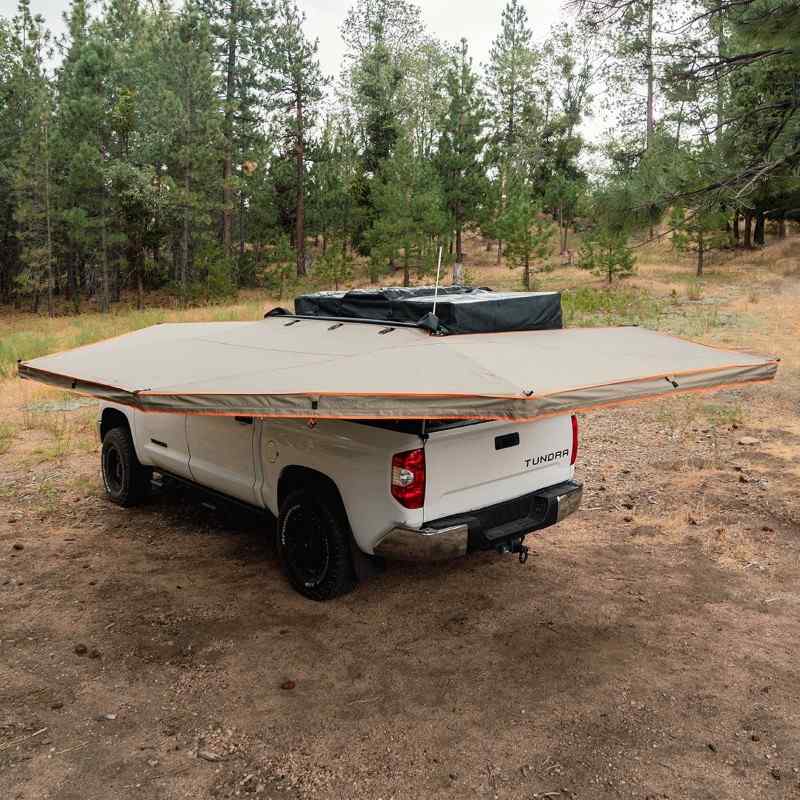 |
A heavy-duty 270-degree awning kit from Tuff Stuff, including mounting brackets for easy installation without a roof rack. | Includes mounting brackets - Heavy-duty and rugged construction - Easy to set up and take down |
| Body Armor Sky Ridge 270Xl Awning | 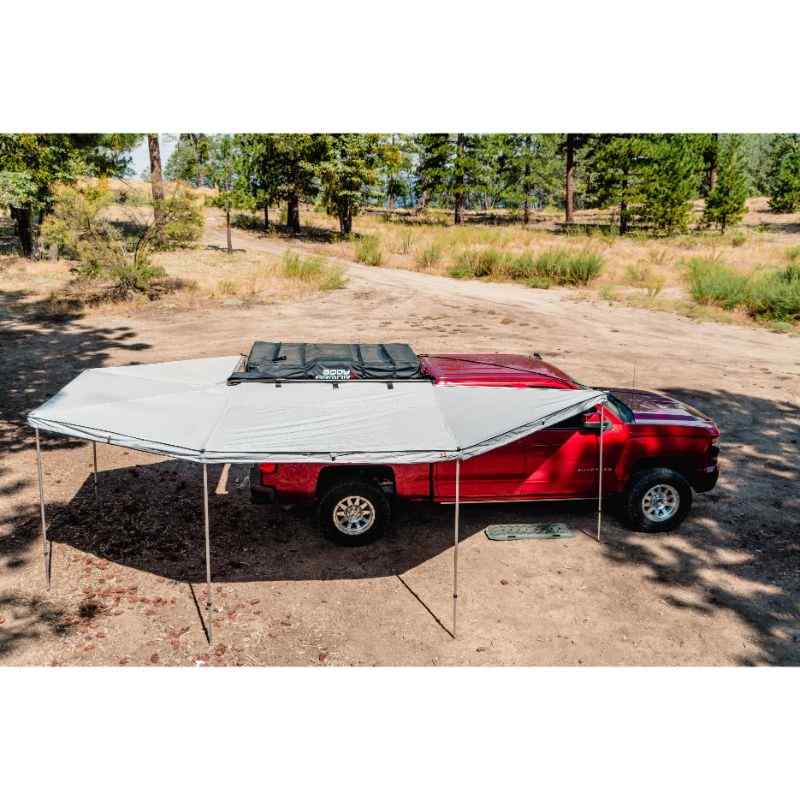 |
A 270-degree driver side awning from Body Armor with included mounting brackets for installation without a roof rack. | Driver side mounting - Includes mounting brackets - Lightweight and easy to install |
| Tuff Stuff Overland 180 Degree Awning | 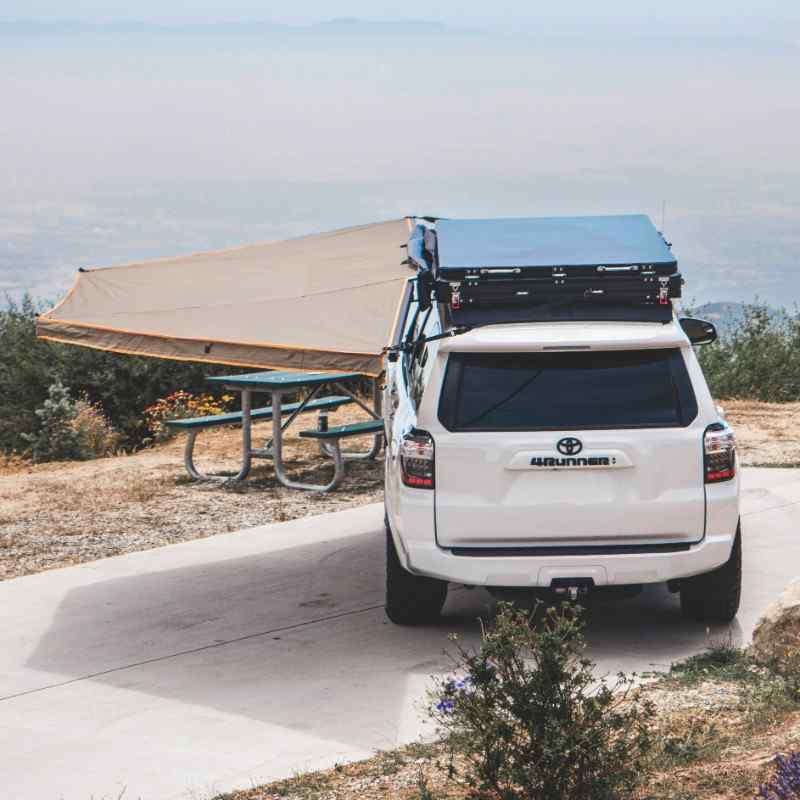 |
A rugged 180-degree awning kit from Tuff Stuff, equipped with mounting brackets for easy installation on vehicles without a roof rack. | Includes mounting brackets - Heavy-duty and rugged construction - Easy to set up and take down |
| Overland Vehicle Systems Nomadic LT 270 Awning | 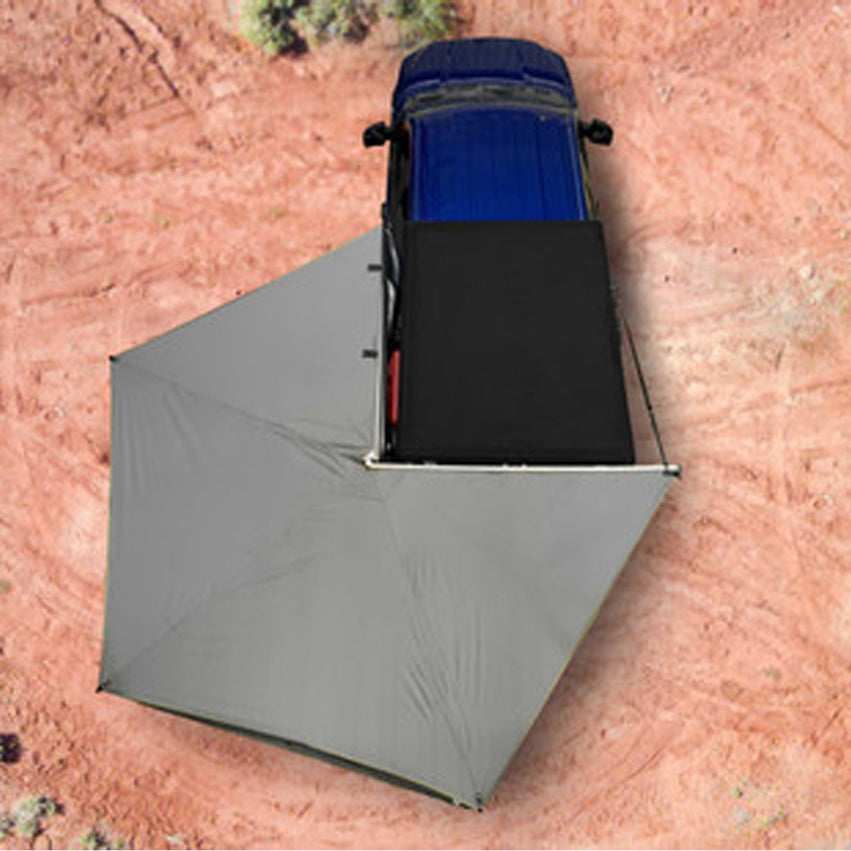 |
The Nomadic LT 270 awning from Overland Vehicle Systems offers 270 degrees of shade and includes mounting brackets. | Includes mounting brackets - Lightweight and durable construction - Easy to install and use |
| 23Zero Peregrine 180 Degree Compact Awning 2.0 |  |
A compact 180-degree awning from 23Zero, designed for easy portability and installation without a roof rack. | Compact and lightweight design - Easy to set up and store - Durable construction |
| Overland Vehicle Systems 180 Awning | 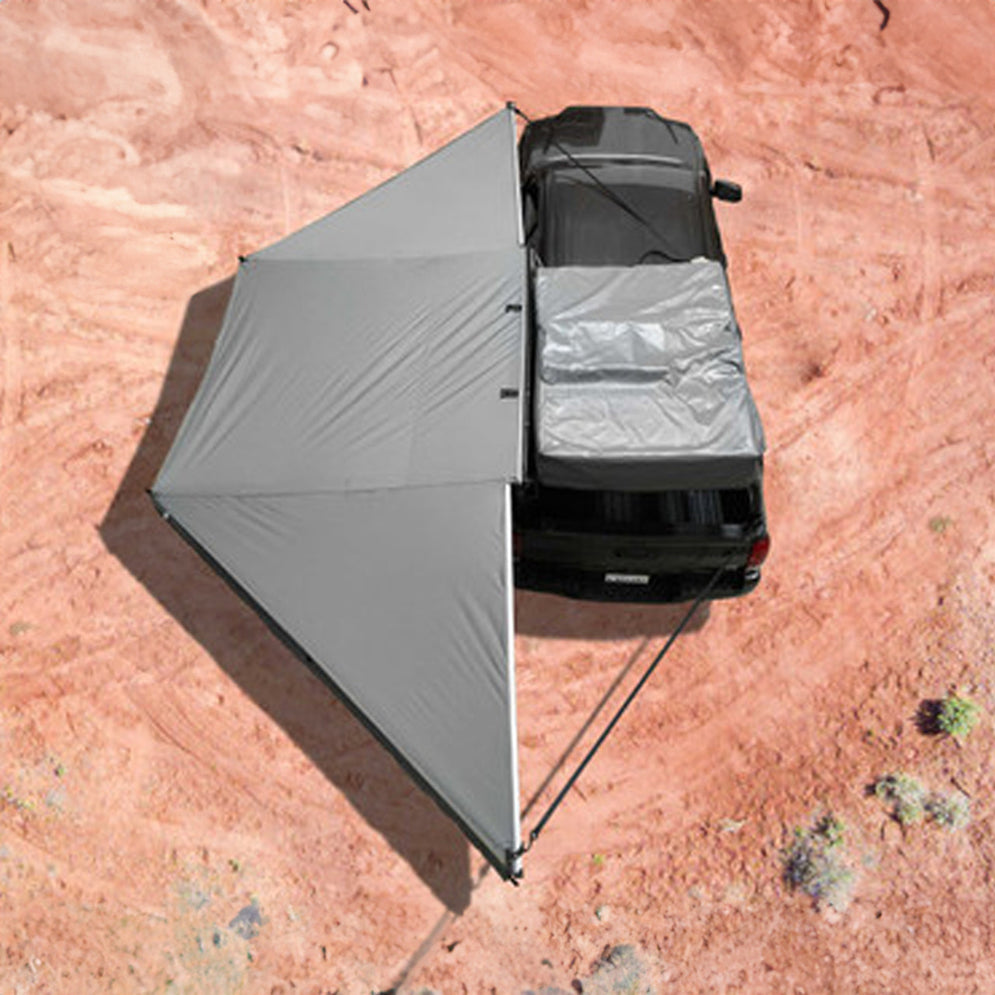 |
A 180-degree awning from Overland Vehicle Systems, specially designed with a bracket kit for mid and high-roofline vans. | Bracket kit for van installation - Durable and weather-resistant - Easy to set up and use |
Potential Risks of Installing a Car Awning Without a Roof Rack
While installing a car awning without a roof rack is entirely possible, it's important to be aware of the potential risks involved.
Proper precautions and careful installation are crucial to avoid any issues. Here are some key risks to consider:
Damage to Vehicle: If the mounting brackets are not installed correctly or the awning is not properly secured, it could potentially scratch, dent, or cause other damage to your vehicle's paint or body panels.
Following the manufacturer's instructions precisely and using the recommended tools is essential to mitigate this risk.
Interference with swing-away or pop-up mechanisms: When mounting the awning to the side or rear of the vehicle, the straps could interfere with any swing-away or pop-up mechanisms, potentially causing damage.
Awning Instability: Without the sturdy support of a roof rack, there is a higher chance that the awning could become unstable, especially in windy conditions.
Proper tensioning and secure mounting are critical to prevent the awning from shifting or detaching unexpectedly.
Damage to the rear door when opening/closing: If the awning is mounted along the side or rear of the vehicle, the straps could get in the way when opening and closing the rear door, potentially causing damage.
Water Leakage: If the awning is not perfectly aligned or the seals are not airtight, there is a risk of water leakage during rain or storms.
This could lead to moisture intrusion into your vehicle's interior or pooling water around the mounting points.
Personal Injury: Improperly installed awnings could potentially detach or collapse, posing a risk of injury to anyone standing or sitting beneath them.
Exercise caution and avoid using the awning in extreme weather conditions.
By understanding these potential risks and taking the necessary precautions, you can safely enjoy the convenience and comfort of a car awning without a roof rack. Carefully follow the installation instructions, use the recommended mounting hardware, and periodically inspect the awning for any signs of instability or wear.


Leave a comment